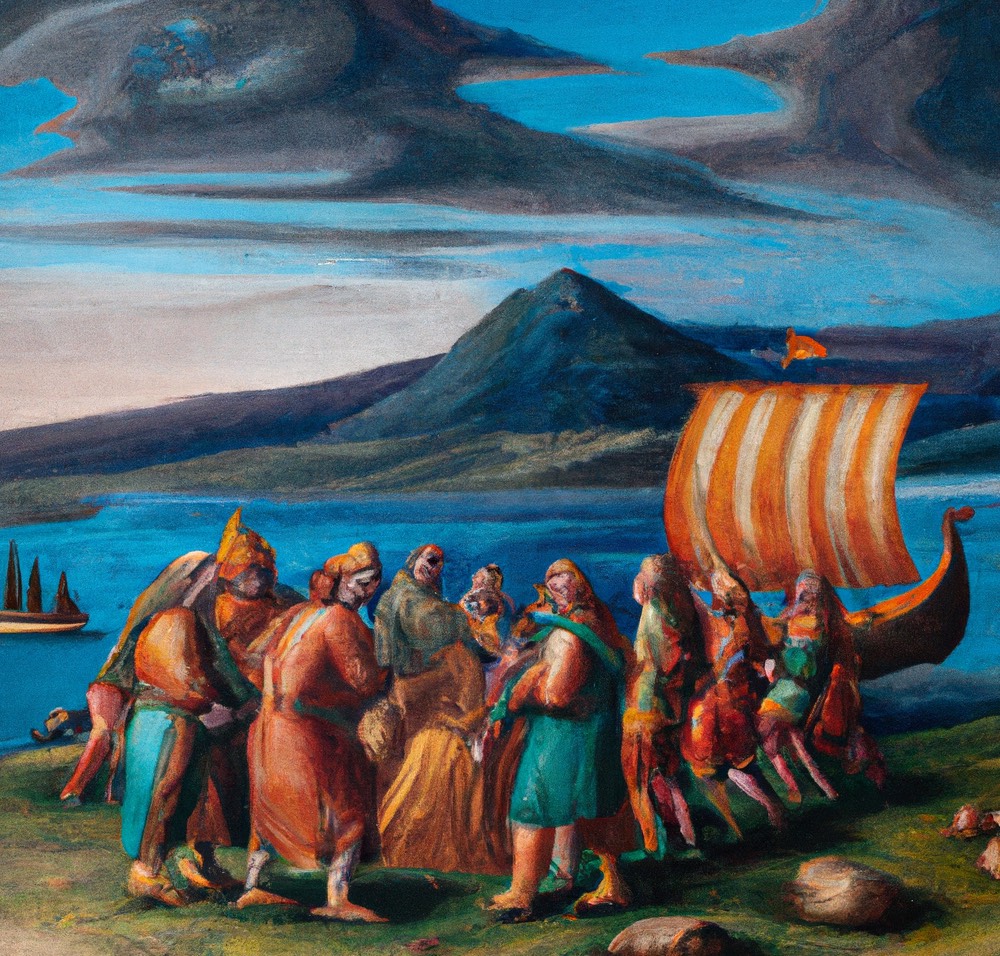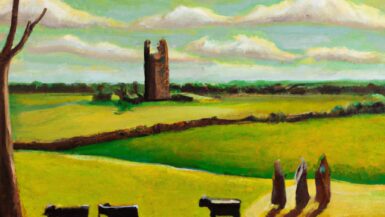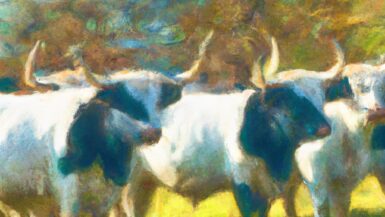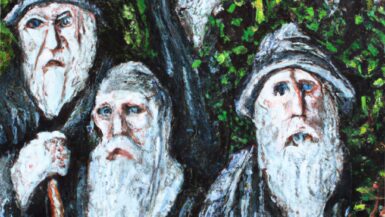The Vikings, initially known for their fearsome raids, soon became an integral part of Irish society. Over time, their relationship with the native Irish transitioned from conflict to cooperation, laying the foundation for a rich tapestry of cultural, economic, and social exchanges.
The Initial Viking Raids and the Shift to Settlement
Early Raids on Irish Shores
The Viking presence in Ireland began with sporadic raids in the late 8th century. Monasteries, with their wealth and strategic locations, were primary targets, such as the infamous raid on the island monastery of Iona in 795 AD.
Transition from Raiders to Settlers
By the mid-9th century, the Vikings began to establish permanent settlements, notably Dublin, Waterford, Limerick, and Cork. These settlements soon became bustling centers of trade and commerce.
The Role of Trade in Viking-Irish Relations
The Emergence of Viking Trading Towns
Dublin, originally a Viking settlement, transformed into a significant trading hub, connecting Ireland to wider European and Scandinavian trade networks. Goods such as slaves, cattle, textiles, and precious metals flowed through these trading towns.
The Shared Economic Interests
The Irish hinterlands provided goods like cereals, leather, and wool, while the Vikings brought in exotic items such as silks, wines, and foreign coinage. This mutual dependence fostered cooperation and lessened hostilities.
Intermarriage and the Blending of Societies
Matrimonial Alliances
Marriage between Vikings and the Irish became common, especially among the elite classes. Such unions were not just personal but also political, cementing alliances and enhancing trade relations.
The Birth of the Hiberno-Norse
From these unions arose a unique community known as the Hiberno-Norse, who were of mixed Irish and Viking ancestry. They played a crucial role as cultural intermediaries, blending both traditions and practices.
Cultural Exchange: More than Just Fusion
Language and Literature
The Old Norse language influenced Old Irish, introducing new words and concepts. This linguistic blend is evident in place names, personal names, and even in literature where Norse sagas often intertwined with Irish legends.
Art and Craftsmanship
Hiberno-Norse art, especially in metalwork and jewelry, showcased a blend of Viking designs with traditional Celtic motifs. The intricate designs on brooches, arm-rings, and coins stand as a testament to this shared artistic vision.
Religion and Spirituality
While the Vikings brought with them Norse gods like Odin and Thor, over time, many converted to Christianity, the dominant religion in Ireland. This religious confluence led to unique interpretations, like the syncretic depiction of Norse gods with Christian symbols.
Political Impacts and Shared Governance
Viking Kings and Irish Lords
Viking leaders often established themselves as kings of their territories, but they had to navigate the complex political landscape of Ireland, which consisted of numerous small kingdoms. Over time, Vikings formed alliances with Irish lords, sometimes through marriage and sometimes through shared interests.
The Importance of Diplomacy
The frequent interactions, be it through trade, warfare, or politics, necessitated diplomacy. Both Viking chieftains and Irish kings employed envoys and diplomats to negotiate terms, treaties, and trade agreements.
The Enduring Legacy of Viking Integration
Modern-Day Celebrations and Commemorations
Today, the Viking legacy in Ireland is celebrated through festivals, re-enactments, and museums. Events like the “Battle of Clontarf” re-enactment or the “Viking Triangle” in Waterford city attract both locals and tourists.
The Viking Influence on Irish Identity
While the Viking era was just one chapter in Ireland’s long history, it left an indelible mark. The modern Irish identity, in many ways, has been shaped by this period of integration, with Hiberno-Norse descendants spread throughout the country.
The Vikings’ journey in Ireland, from raiders to integral members of society, highlights the dynamic nature of cultural interactions. Over centuries, what began as a relationship of conflict evolved into one of collaboration, leaving behind a shared heritage that still resonates in Ireland today.






Leave a reply